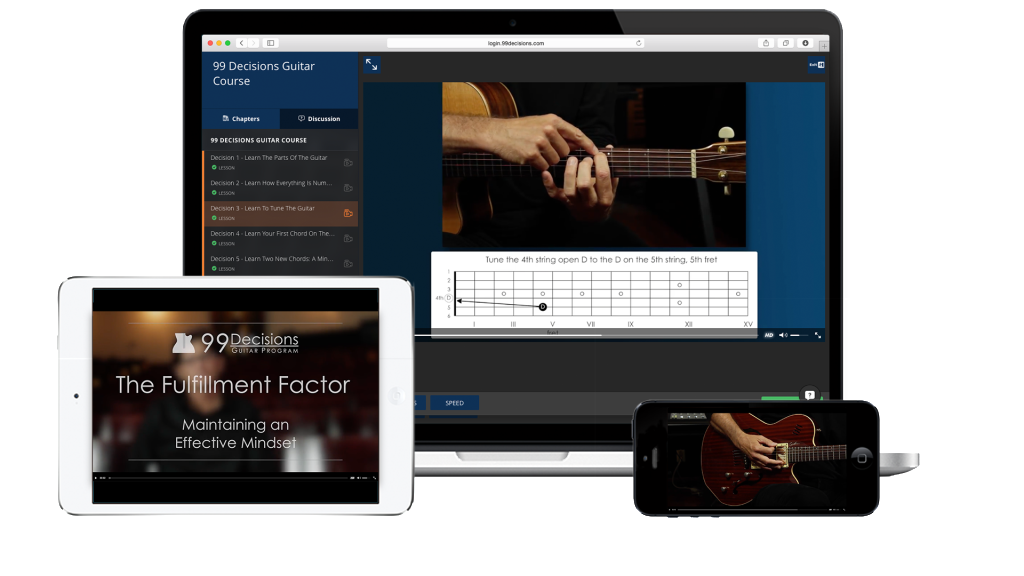I thought of phrase while working with a client the other day…
“From cognition to speaker.”
It refers to the path an original thought in your brain travels as it goes from an idea in your head to becoming a musical sound that comes out of your guitar amp.
Thought → Fingers → Guitar → Cable → Amplifier → Speaker.
And then, the listener receives it.
(the listener includes you, by the way… not just your audience)
Now we could get into a very interesting discussion about what goes on with the brain when it creates music, and how sometimes it seems as if there is no thinking involved… you just close your eyes & let ‘er rip. But for this article, let’s talk about ideas… creative ideas about what to do to be more creative.
I want to show you a list I found while cleaning out my loft last week. It’s a list I made years ago when I thought I could come up with every single thing one could do during a guitar solo.
It’s a menu of sorts. A menu of options. A menu of artistic options.
And, I thought it would be an interesting experience (for me, at least) to copy the list straight into the blog… meaning, unedited. I have not read this since I last looked at it over ten years ago. In fact, I might have made the list even longer ago than that. (note to self: date your work)
So, here it goes…
Improv List
• 12 notes
• block chords
• arpeggiated chords
• ascending notes
• descending notes
• scales
• arpeggios
• sounds
• 2 notes
• 3 notes
• 4 notes
• 5 notes
• 6 notes
• 1 note
• no notes
• sequences- intervallic
• sequences- groups 0f 2
• sequences- groups 0f 3
• sequences- groups 0f 4
• sequences- groups 0f 5
• sequences- groups 0f 6
• sequences- groups 0f 7
• licks
• dissonance
• consonance
• bends
• slides
• picking notes
• hammer ons
• pull offs
• chord melody
• over-lap lines
• repeat notes
• contrary motion lines
• common tones
• octaves
• chord tones
• busy
• sparse
• melodic
• angular
• smooth contour
• focused
• unfocused
• continuity
• harmonics
• enclosure
• chromatic neighboring tones- above
• chromatic neighboring tones- below
• chromaticism
• diatonicism
• shapes
• quartal harmony
• harmonized scales
• inversions
• rhythm
• speed up
• slow down
• broken chords
• wah
• modulation
• pitch-shift
• wide arpeggios
• arpeggio inversions
• intervals
• bass line with melody or improv
So there you have it.
Well, that was interesting.
To be honest with you, I’m not sure I understood what exactly I meant with a few of those. Which is cool.
I think you should take any of these suggestions & give it your own meaning. That’s what we are suppose to do with song lyrics, right?
(especially Steely Dan lyrics)
And this is, by no means, a complete list. of course.
Many artists complain of getting bored with their own art. And this makes sense.
Think about it- you have to live with your own playing 24/7, so it kinda makes sense that you can become somewhat immune to your own awesomeness (or semi-awesomeness), merely due to over-exposure. I think many players have somewhat of a guitar playing dysmorphia… where they don’t possess an accurate idea of exactly how well they play. Personal awareness is an issue in & of itself and when it comes to creativity, there is an inherent challenge in assessing how good your own art is… or isn’t.
This collection of soloing ideas, through comparison to your current soloing inclinations, could be used to become more aware of your own playing which, in turn, can help you break out of habits & tendencies. If you feel you keep playing the same ideas over & over, then please realize that it is simply a matter of stopping doing that “thing” & doing something else.
I have to say, I really really wanted to make it thought this article without saying the tired, yet incredibly true, quote:
The definition of insanity = keep doing the same things over & over and expecting different results.
So try this…
• Find a basic & comfortable backing track, or create a loop on your computer, or use a looper. Keep it simple… one key in a medium tempo. And, you want it to be only around 5 minutes long.
• Pick one thing off of the list and jam over the entire backing track focusing on utilizing that one thing you picked from the list.
• Be as exploratory as possible. Resist the urge to judge what you come up with… it is what it is, in that moment.
• Repeat with next item.
If you feel like you don’t have a lot of interesting ideas when you improvise, what’s wrong with looking at a list of ideas while you are actually soloing?
(and do I have to tell you?… you probably want to do this whilst practicing safely at home and not on stage)
At this point, I’m hoping you know what I am going to say next…
Make your own list.
And make sure you date it.



Leave A Response